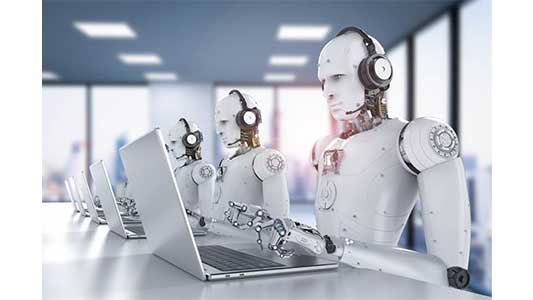In the last decade, service robotics has emerged as a revolutionary force, transforming industries and everyday life. Unlike industrial robots, which are primarily used in manufacturing, service robots are designed to assist humans by performing tasks in non-industrial environments. These robots are becoming increasingly sophisticated, incorporating artificial intelligence (AI), machine learning, and advanced sensors to perform complex functions. From healthcare and hospitality to logistics and domestic assistance, service robots are redefining the way businesses and individuals interact with technology.
The global service robotics market is experiencing rapid growth, driven by advancements in artificial intelligence (AI), automation, and sensor technology. Increasing demand for efficiency in healthcare, logistics, hospitality, and domestic applications is fueling market expansion. According to industry reports, the market is expected to witness significant growth, with a rising adoption of autonomous robots for tasks such as cleaning, delivery, security, and personal assistance. North America, Europe, and Asia-Pacific are the leading regions, with strong investments in robotics research and development. Key trends include AI-powered robotics, 5G integration, and human-robot collaboration, shaping the future of the service robotics industry.
Service robots are automated machines that assist humans by performing tasks that improve efficiency, convenience, and safety. These robots operate in various sectors, providing services that range from cleaning and delivery to healthcare support and customer service.
The International Organization for Standardization (ISO) defines a service robot as a robot that “performs useful tasks for humans or equipment, excluding industrial automation applications.” This category includes both personal and professional service robots.
- Personal Service Robots: Designed for private use, such as robotic vacuum cleaners, lawn mowers, and social companion robots.
- Professional Service Robots: Used in commercial or professional settings, such as healthcare, logistics, security, and hospitality.
The Evolution of Service Robotics
Service robotics has evolved significantly from simple mechanical assistants to intelligent, autonomous machines. Early robots were primarily used for repetitive tasks in controlled environments. However, advancements in AI, computer vision, and sensor technology have enabled service robots to perform more complex tasks with minimal human intervention.
- 1960s–1980s: The early concepts of service robots emerged, primarily for space exploration and military applications.
- 1990s: The development of household robotic devices, such as robotic vacuum cleaners, gained momentum.
- 2000s: AI-powered robots began to enter healthcare and commercial sectors, improving efficiency and service quality.
- 2010s–Present: Service robots have become more autonomous, mobile, and interactive, with applications expanding across various industries.
Key Applications of Service Robots
1. Healthcare and Elderly Care
Healthcare is one of the most promising sectors for service robotics. Robots assist doctors, nurses, and caregivers by performing routine tasks, allowing them to focus on patient care.
- Surgical Robots: Systems like the da Vinci Surgical System enable minimally invasive surgeries with precision.
- Nursing and Caregiving Robots: Robots like Pepper and Paro provide companionship to elderly individuals, reducing loneliness and improving mental health.
- Disinfection and Sanitation Robots: Autonomous robots, such as UVD robots, use UV light to disinfect hospitals and reduce infections.
2. Hospitality and Customer Service
Hotels, restaurants, and retail stores are increasingly adopting service robots to enhance customer experiences.
- Hotel Service Robots: Robots like Relay deliver food and amenities to hotel guests.
- Retail and Shopping Assistance: AI-powered robots assist customers by answering queries, locating products, and managing inventory.
- Food and Beverage Industry: Robotic waiters and bartenders serve customers efficiently, reducing labor costs.
3. Logistics and Warehousing
With the rise of e-commerce, logistics and warehousing have become crucial sectors for service robotics.
- Autonomous Mobile Robots (AMRs): Used in warehouses to transport goods efficiently.
- Drone Delivery Systems: Companies like Amazon and UPS are experimenting with drone delivery for faster logistics.
- Last-Mile Delivery Robots: Small autonomous robots deliver packages to customers’ doorsteps.
4. Domestic Assistance
Many households now rely on service robots for everyday tasks.
- Vacuum Cleaning Robots: Popular models like iRobot Roomba clean homes autonomously.
- Lawn Mowing Robots: Automated lawn mowers keep gardens well-maintained.
- Companion Robots: Social robots provide entertainment and emotional support, especially for children and elderly individuals.
5. Security and Surveillance
Service robots are being deployed for security monitoring and surveillance, reducing the need for human intervention in risky environments.
- Autonomous Security Drones: Patrol areas and provide real-time surveillance.
- Robotic Security Guards: Used in malls, airports, and office buildings for monitoring suspicious activities.
- AI-Powered Threat Detection: Robots equipped with AI can analyze and respond to potential security threats.
Advantages of Service Robots
The adoption of service robots brings numerous benefits to businesses and individuals:
- Increased Efficiency: Robots perform repetitive tasks faster and with greater accuracy.
- Cost Savings: Businesses save on labor costs by automating services.
- Improved Safety: Robots reduce human exposure to hazardous environments, such as disinfection tasks or security monitoring.
- 24/7 Operation: Unlike human workers, robots do not require breaks, allowing continuous operation.
- Enhanced Customer Experience: AI-powered robots provide personalized services and support.
Challenges and Limitations of Service Robotics
Despite their advantages, service robots face several challenges:
- High Initial Investment: The cost of purchasing and maintaining robots is a significant barrier for small businesses.
- Technical Limitations: Robots are not yet fully autonomous and require human supervision in complex situations.
- Ethical and Privacy Concerns: The use of robots in healthcare and security raises privacy and ethical concerns.
- Job Displacement: Automation may lead to job losses in certain industries.
- Regulatory Hurdles: The deployment of autonomous robots is subject to legal and safety regulations.
Future Trends in Service Robotics
As technology advances, the service robotics industry is poised for significant growth. Some key trends include:
- AI and Machine Learning Integration: Future robots will have enhanced decision-making capabilities, making them more adaptive and efficient.
- 5G Connectivity: Faster communication will improve the responsiveness and coordination of service robots.
- Human-Robot Collaboration: Robots will work alongside humans in hybrid workplaces, enhancing productivity.
- Wearable Robotics: Exoskeleton robots will assist disabled individuals and enhance physical capabilities.
- Sustainability and Green Robotics: Future service robots will incorporate eco-friendly materials and energy-efficient technologies.












